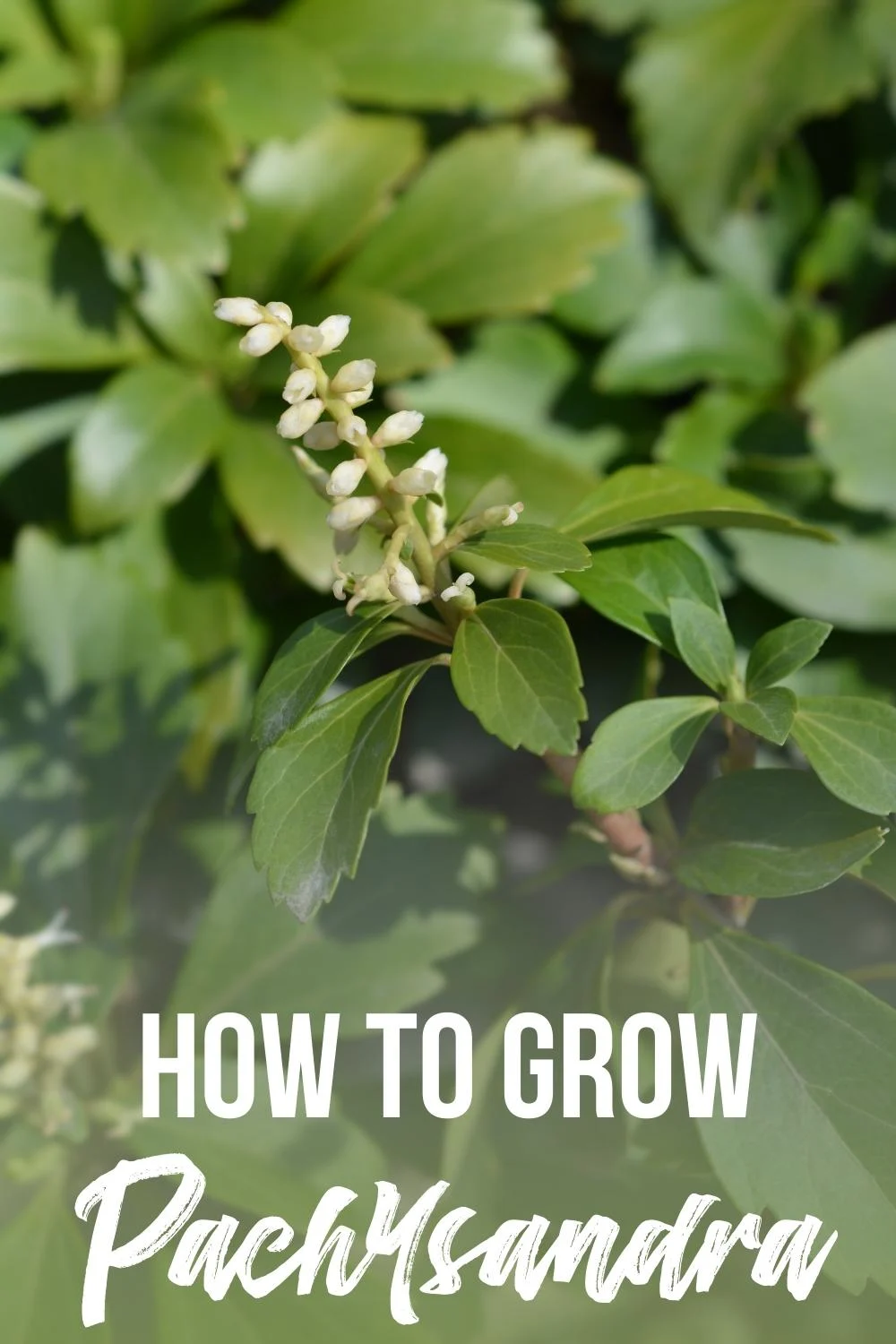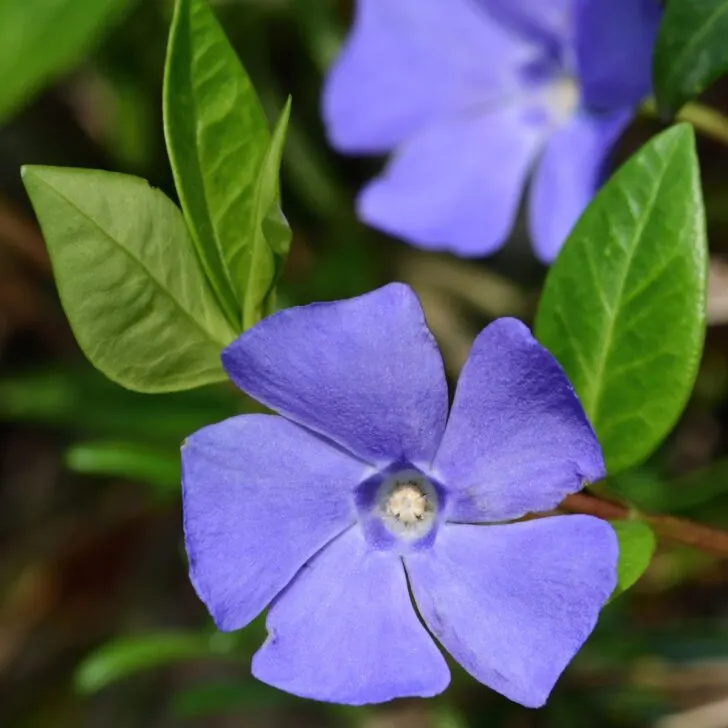Pachysandra are evergreen ground cover plants that are perfect for shady areas under trees where other plants might struggle to grow!

Japanese pachysandra, otherwise known as Pachysandra terminalis, is different from Allegheny spurge (Pachysandra procumbens), which is a warm weather plant native to the southwestern United States. However, both types of pachysandra are evergreen groundcovers that thrive in partial shade to full shade.
While it does bloom with small white flowers in late spring, this member of the boxwood family is more commonly used as a low-maintenance ground cover that stays green throughout the winter months. It spreads slowly through underground runners called rhizomes, and can eventually take over your garden if not kept in check!

The most commonly grown species are Green Sheen, Green Carpet and Silver Edge, which is the variegated variety I planted in my garden. I added an area of these low-growing plants under the Japanese maple in our front yard this summer.

This post contains affiliate links for your convenience. Purchases made through these links may earn me a small commission at no additional cost to you.
Planting Pachysandra
Pachysandra spreads by underground stems or runners, so it will slowly fill in the planting area. Plant individual plants 6-12 inches apart, or about four plants for every square foot. The area will look a little sparse for the first year, but will start to fill in by the second year and eventually cover the surrounding soil surface.
The roots don't grow very deep, so you'll only need to dig down a few inches to plant each sprout. The tree I planted mine under had a thick mat of fine roots at the surface, so I just added a few inches of garden soil on top of the native soil and planted them in that layer.

Consider adding drip irrigation to the area instead of overhead watering. By keeping the leaves dry and only watering at the roots, you can prevent fungal issues that can damage your plants. That's just one of the many benefits of drip irrigation!
Best fertilizer for Pachysandra
I always add a handful of starter fertilizer into the hole before planting anything in the garden. My favorite is this organic fertilizer that stimulates root production and gives the plant a great start.
Once your pachysandra beds are more established, the best time to apply slow-release fertilizer is in early spring as soon as you start to see new growth. Sprinkle the fertilizer around the base of the plant and scratch it into the dry soil.
Any general purpose fertilizer will work, but if you have particularly alkaline soil, you may want to use a fertilizer made for acid-loving plants, such as Holly-Tone, to bring down the pH of your soil.
Plant diseases and concerns
While Pachysandra is fairly low maintenance, there are a few concerns you should be aware of.
Volutella blight is a type of leaf blight caused by fungal infections. It is most commonly found in dense foliage where the soil remains damp for long periods of time. If you notice tan or brown spots with concentric lines on the leaves, remove the affected plants immediately to prevent it from spreading.
If your plants start to lose their deep green color and start to appear faded or yellow, or have scorched tips, they may be exposed to too much direct sunlight. Consider transplanting them to a more shady area to maintain their color.
The most common insect pest that affects Pachysandra is spider mites. This insect infestation appears as tiny specks on the leaves and webs on the new growth. Treat these issues by spraying insecticidal soap on the affected areas.

Companion plants for Pachysandra
Pachysandra plants are commonly found under deciduous trees, where they receive dappled sun in the summer and provide winter interest with their evergreen leaves.

Pair pachysandra with other plants that prefer slightly acidic soil in shady spots, such as hostas and ferns. Also consider flowering plants that grow in the shade, such as Brunnera or Hellebore, with broad leaves that provide contrast in your pachysandra bed.
In my shade garden, Pachysandra pairs nicely with the hostas, coleus and Saxifraga dancing pixies. The variegated colors help brighten the area instead of fading into the background.





